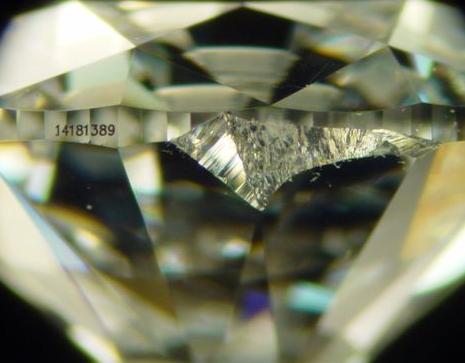A cavity is a type of diamond inclusion that appears as an opening or large indentation on the surface of a diamond. It occurs when a small part of the diamond is removed, often due to the detachment of another inclusion (such as a crystal or feather) during the cutting or polishing process.
Key Characteristics of Cavity Inclusions in Diamonds:
How Cavities Form
They usually form when a weak area of the diamond, such as an internal inclusion, falls out during cutting, polishing, or wear.
Can also result from the removal of a feather (crack) or crystal inclusion.
Impact on Diamond Quality & Value
Visibility: Cavities can be noticeable, especially if they are large or located in a prominent position.
Durability Concern: A deep cavity can make a diamond more vulnerable to chipping or further damage over time.
Clarity Grade Reduction: Diamonds with significant cavities may receive a lower clarity grade from the GIA (Gemological Institute of America).
Where Cavities Are Found
They can appear anywhere on the diamond, but those near the edges or girdle are less concerning than those in the center (table).
How to Minimize the Effect of Cavities
Strategic Setting: A prong or bezel setting can hide a cavity located near the edge.
Polishing & Recutting: If the cavity is shallow, a jeweler may be able to polish or recut the diamond to remove or reduce its appearance.
Avoiding Further Damage: Regular cleaning and careful handling can help prevent dirt from accumulating inside the cavity, which can make it more visible.

